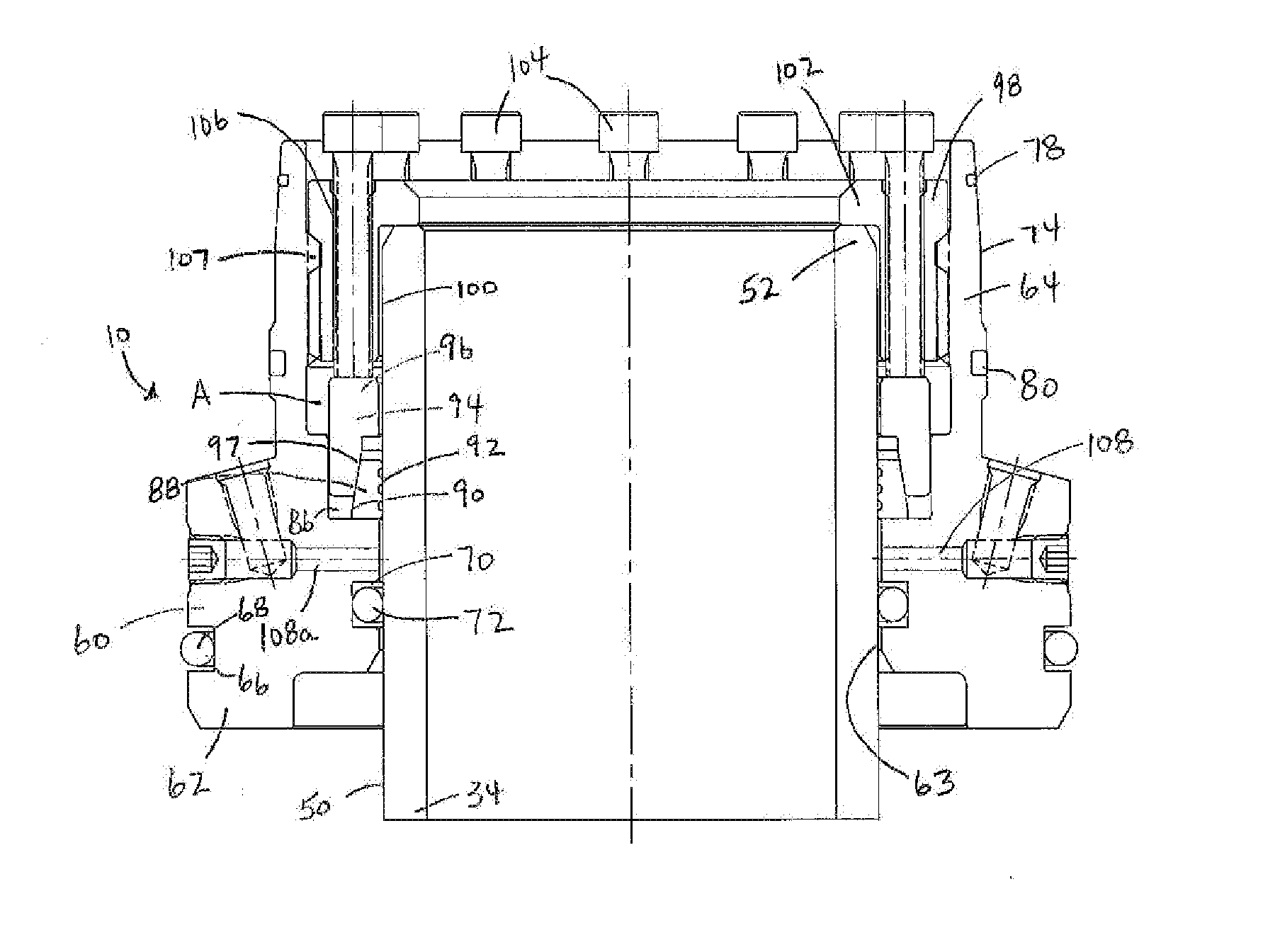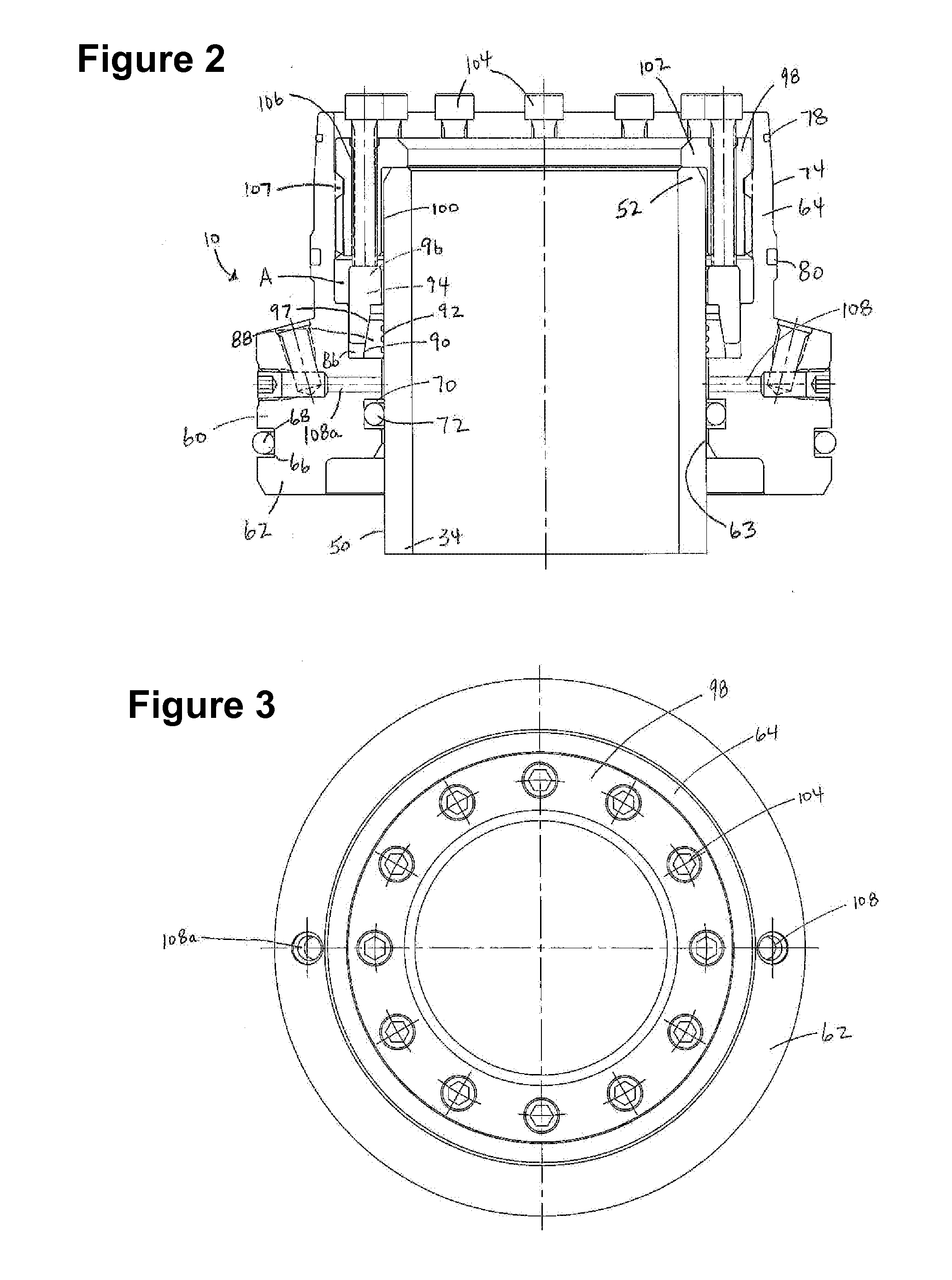Wellhead seal device to seal casing
a sealing device and wellhead technology, applied in the direction of well accessories, drilling accessories, fluid removal, etc., can solve the problem of taking a large force to energize the seal to the casing surface, and achieve the effect of less force and large diametric toleran
- Summary
- Abstract
- Description
- Claims
- Application Information
AI Technical Summary
Benefits of technology
Problems solved by technology
Method used
Image
Examples
Embodiment Construction
[0036]Having reference to FIGS. 1-3, one exemplary embodiment of the wellhead seal device 10 is shown in connected and sealing relationship in a wellhead assembly 11. A lower wellhead member, shown as a casing head 12, is connected to an upper wellhead member, shown as a tubing head 14. The connection between the wellhead members 12, 14 is shown as a threaded collar 16, although other known pressure containing wellhead connections may be used, such as other threaded connections, top and bottom bolted flanges, bolted up or down stud connectors, hub connectors or welded connections. The threaded collar 16 is formed with a set of left-hand threads 18 and a set of right-hand threads 20 on its inner surface. Threads 18, 20 provide a threaded connection to the threads 22 on the lower end 54 of the tubing head 14, and to the threads 24 on the upper end 56 of the casing head 12. This type of threaded connection is described in greater detail in United States Published Patent Application 200...
PUM
 Login to View More
Login to View More Abstract
Description
Claims
Application Information
 Login to View More
Login to View More - R&D
- Intellectual Property
- Life Sciences
- Materials
- Tech Scout
- Unparalleled Data Quality
- Higher Quality Content
- 60% Fewer Hallucinations
Browse by: Latest US Patents, China's latest patents, Technical Efficacy Thesaurus, Application Domain, Technology Topic, Popular Technical Reports.
© 2025 PatSnap. All rights reserved.Legal|Privacy policy|Modern Slavery Act Transparency Statement|Sitemap|About US| Contact US: help@patsnap.com



